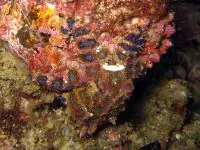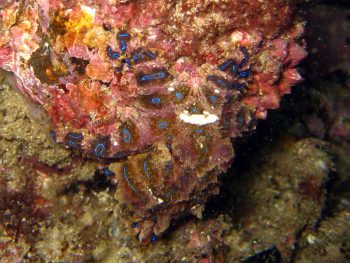Blue-ringed octopuses (Hapalochlaena) are among the most toxic aquatic animals in the world. However, they are docile animals unless provoked. They fall under the genus Hapalochalaena, which consists of 4 species:
- Great blue-ringed octopus
- Southern blue-ringed octopus
- Blue-lined octopus
- Hapalochalaena nierstraszi
These octopuses have yellow skin along with bright colored rings that have black and blue outlines. There are around 50 to 60 rings on their bodies. Great blue-ringed octopus has light reflectors that reflect blue-green light. These reflectors are known as iridophores.
They are small octopuses and can grow from 12 to 20 centimeters in length.
The blue-ringed octopus lays eggs in late fall. Each clutch contains 50 eggs and a female lays only one clutch during its entire lifespan. The mother incubates her eggs for 6 months. However, she dies at the time of hatching.
They are native to the Indian an d Pacific Oceans. They are widely distributed from Japan to Australia. The blue-ringed octopuses occupy habitats of coral reefs and rock pools.
d Pacific Oceans. They are widely distributed from Japan to Australia. The blue-ringed octopuses occupy habitats of coral reefs and rock pools.
The primary diet of these octopuses consists of shrimp and crabs. Occasionally, fish may also become part of their diet. They puncture the external skeleton of the prey by means of their beak and paralyses it through injecting poison.
The venom of each blue-ringed octopus can kill 26 adult humans in minutes due to paralysis.
Normally, blue-ringed octopuses live inside the crevices. As they see any approaching danger, they camouflage themselves by changing colors and can also change their shapes. By compressing its body, the blue-ringed octopus can easily fit into small crevices. In order to scare away predators, blue-ringed octopuses tend to turn their bodies into bright yellow while the rings on their skins flicker in bright blue colors.





